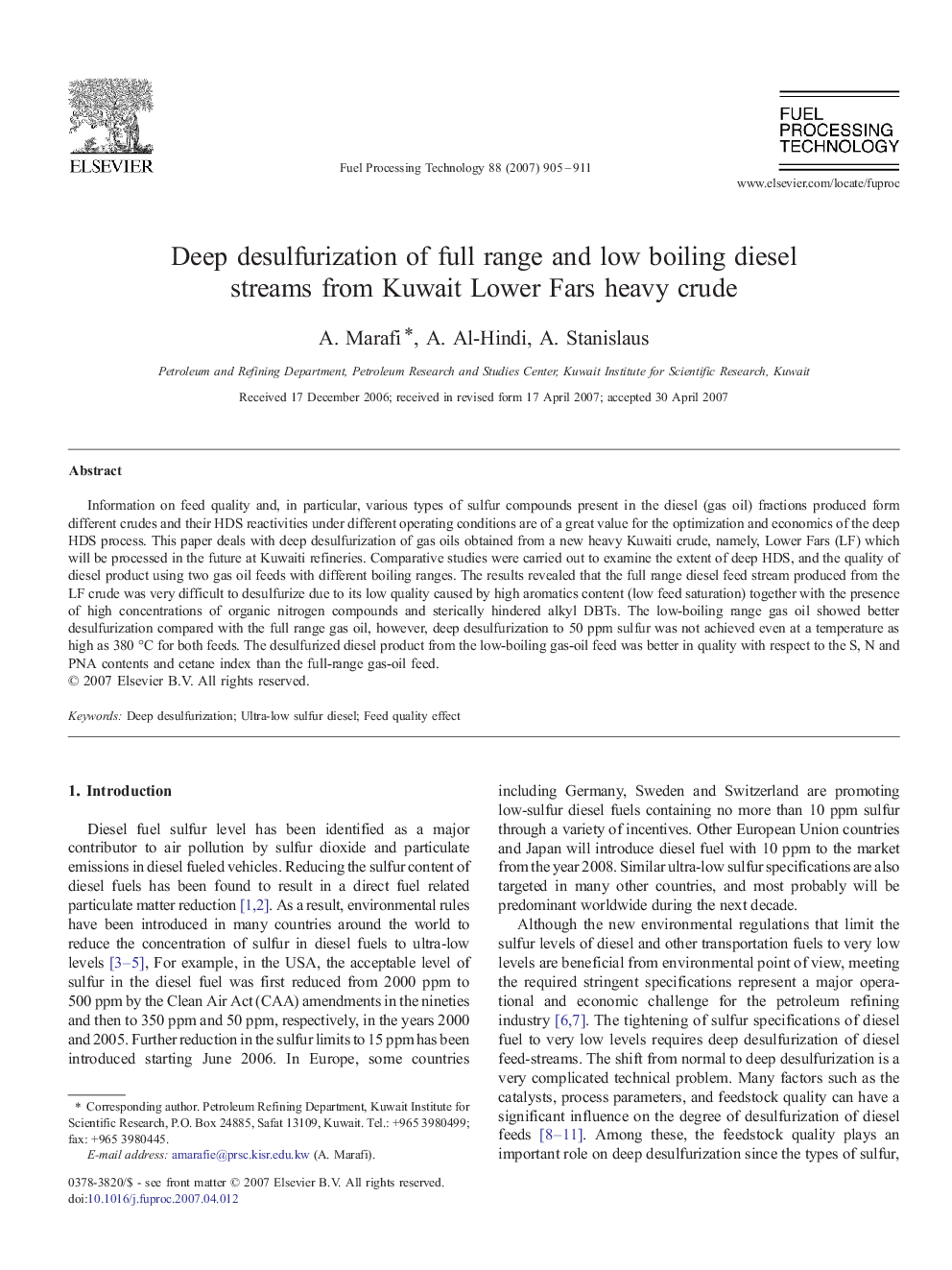| Article ID | Journal | Published Year | Pages | File Type |
|---|---|---|---|---|
| 211490 | Fuel Processing Technology | 2007 | 7 Pages |
Information on feed quality and, in particular, various types of sulfur compounds present in the diesel (gas oil) fractions produced form different crudes and their HDS reactivities under different operating conditions are of a great value for the optimization and economics of the deep HDS process. This paper deals with deep desulfurization of gas oils obtained from a new heavy Kuwaiti crude, namely, Lower Fars (LF) which will be processed in the future at Kuwaiti refineries. Comparative studies were carried out to examine the extent of deep HDS, and the quality of diesel product using two gas oil feeds with different boiling ranges. The results revealed that the full range diesel feed stream produced from the LF crude was very difficult to desulfurize due to its low quality caused by high aromatics content (low feed saturation) together with the presence of high concentrations of organic nitrogen compounds and sterically hindered alkyl DBTs. The low-boiling range gas oil showed better desulfurization compared with the full range gas oil, however, deep desulfurization to 50 ppm sulfur was not achieved even at a temperature as high as 380 °C for both feeds. The desulfurized diesel product from the low-boiling gas-oil feed was better in quality with respect to the S, N and PNA contents and cetane index than the full-range gas-oil feed.
